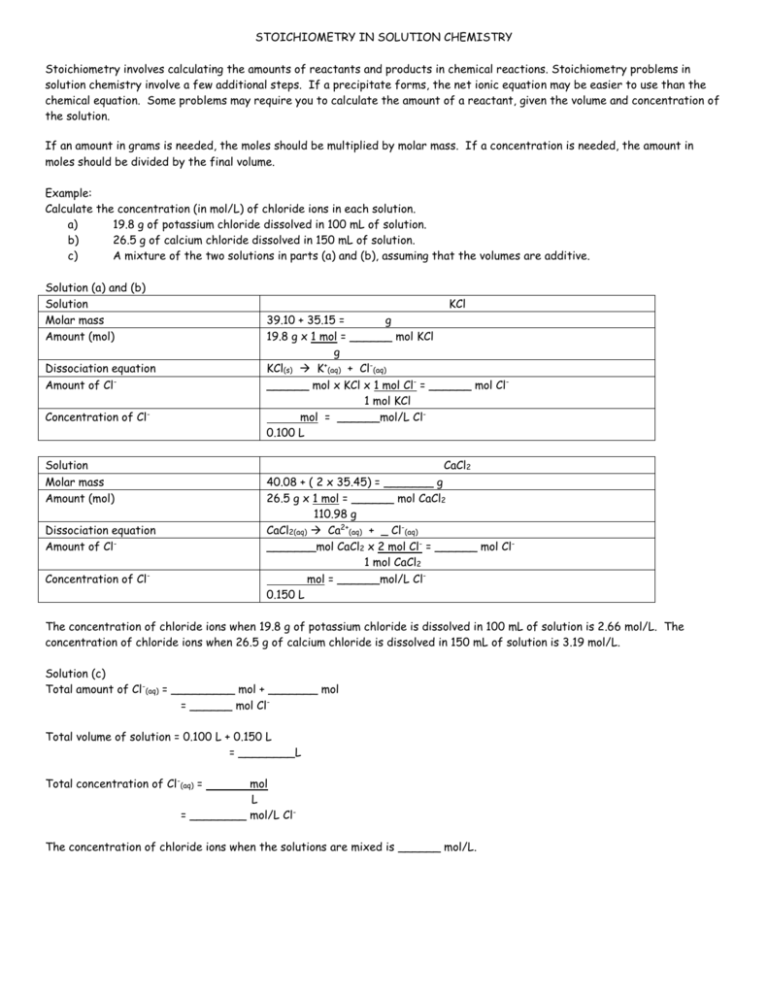STOICHIOMETRY IN SOLUTION CHEMISTRY
advertisement

STOICHIOMETRY IN SOLUTION CHEMISTRY Stoichiometry involves calculating the amounts of reactants and products in chemical reactions. Stoichiometry problems in solution chemistry involve a few additional steps. If a precipitate forms, the net ionic equation may be easier to use than the chemical equation. Some problems may require you to calculate the amount of a reactant, given the volume and concentration of the solution. If an amount in grams is needed, the moles should be multiplied by molar mass. If a concentration is needed, the amount in moles should be divided by the final volume. Example: Calculate the concentration (in mol/L) of chloride ions in each solution. a) 19.8 g of potassium chloride dissolved in 100 mL of solution. b) 26.5 g of calcium chloride dissolved in 150 mL of solution. c) A mixture of the two solutions in parts (a) and (b), assuming that the volumes are additive. Solution (a) and (b) Solution Molar mass Amount (mol) KCl 39.10 + 35.15 = g 19.8 g x 1 mol = ______ mol KCl g KCl(s) K+(aq) + Cl-(aq) ______ mol x KCl x 1 mol Cl- = ______ mol Cl1 mol KCl mol = ______mol/L Cl0.100 L Dissociation equation Amount of ClConcentration of Cl- Solution Molar mass Amount (mol) CaCl2 40.08 + ( 2 x 35.45) = _______ g 26.5 g x 1 mol = ______ mol CaCl2 110.98 g CaCl2(aq) Ca2+(aq) + _ Cl-(aq) _______mol CaCl2 x 2 mol Cl- = ______ mol Cl1 mol CaCl2 mol = ______mol/L Cl0.150 L Dissociation equation Amount of ClConcentration of Cl- The concentration of chloride ions when 19.8 g of potassium chloride is dissolved in 100 mL of solution is 2.66 mol/L. The concentration of chloride ions when 26.5 g of calcium chloride is dissolved in 150 mL of solution is 3.19 mol/L. Solution (c) Total amount of Cl-(aq) = _________ mol + _______ mol = ______ mol ClTotal volume of solution = 0.100 L + 0.150 L = ________L Total concentration of Cl-(aq) = mol L = ________ mol/L Cl- The concentration of chloride ions when the solutions are mixed is ______ mol/L.







